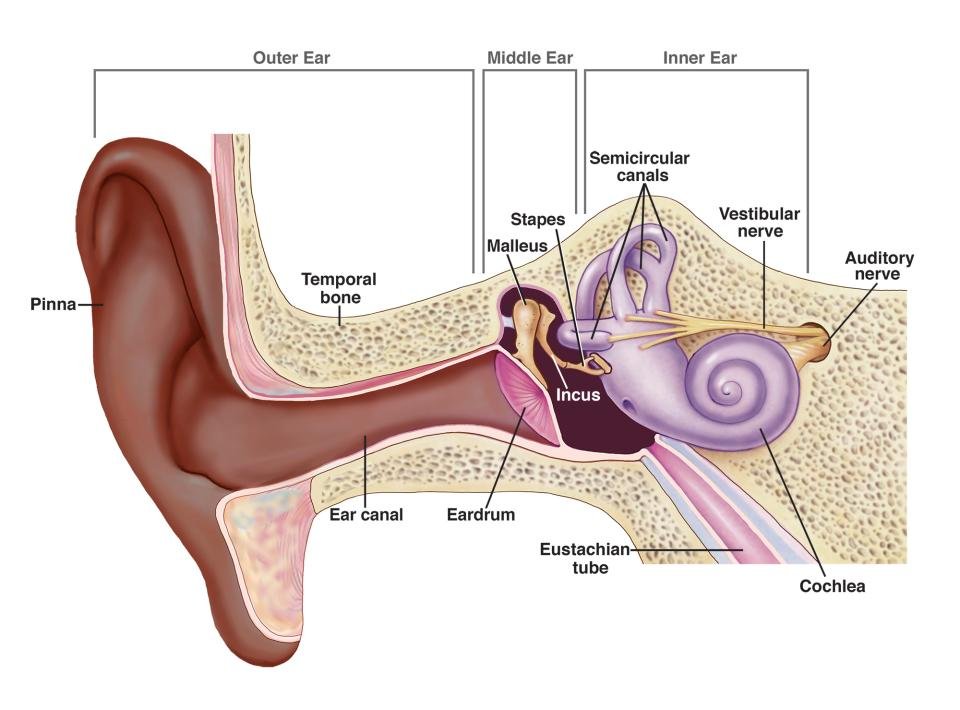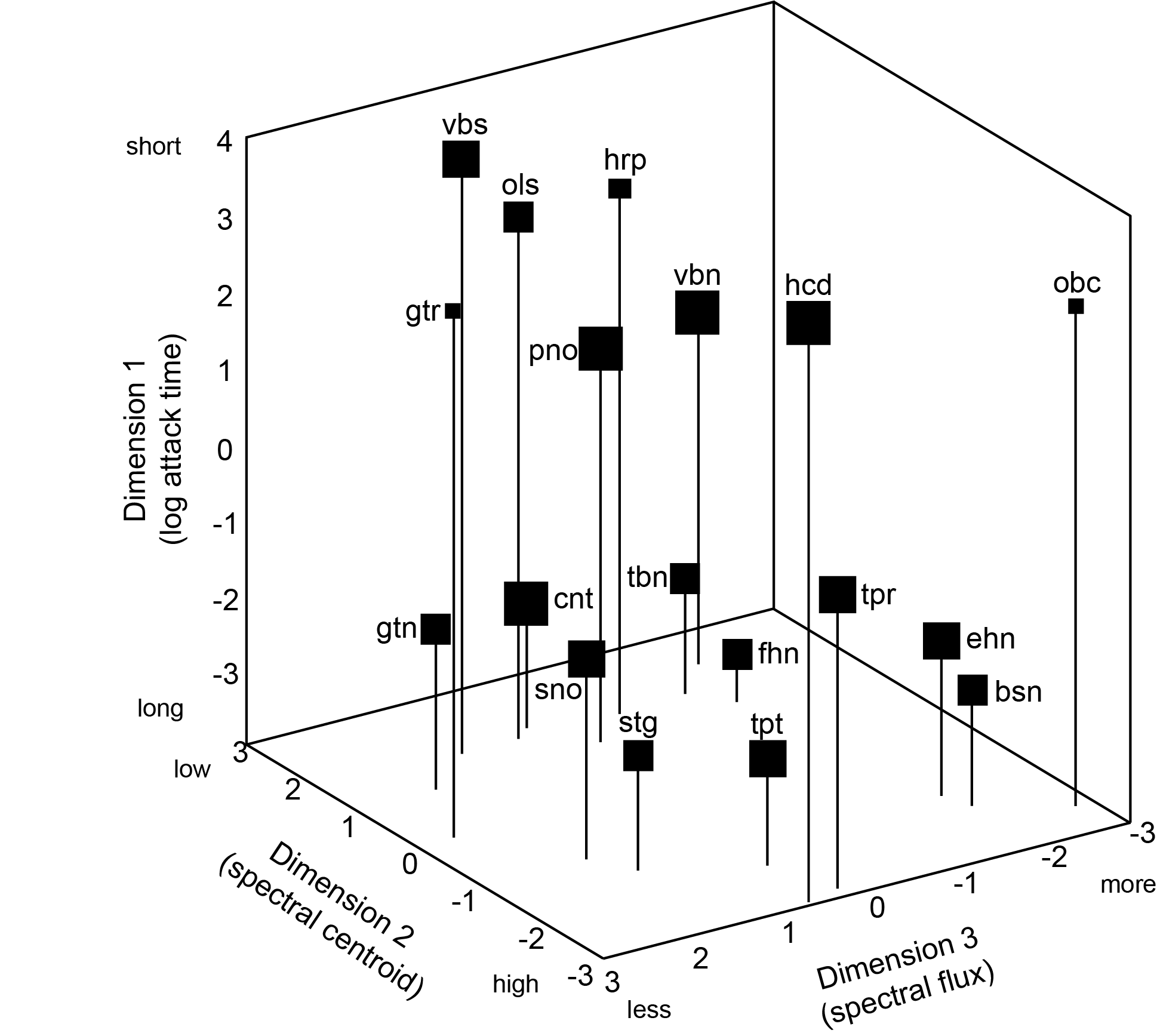
Timbrenauts: Creative Explorations in Timbre Space
“Timbrenauts” is a cross-institutional collaborative student research-creation project. We employed experimental designs from timbre perception research to generate data models that will inform the creation of new musical compositions for an atypical instrumental duo of cello and trombone, while leveraging extended techniques rarely explored in traditional musical repertoire. In this TOR module, we discuss our motivations, data collection process, similarity judgment experiment, and the resulting data we want musicians to use as a basis for their creative output.

Klangfarbenmelodie
A compositional technique where a musical line or melody is split between several instruments, rather than being played by a single instrument. Each instrument plays a note or a short succession of notes, creating a continuous melody with a constantly changing timbre or "tone colour.”

Masking
Suppose you enter a restaurant with a friend, mid-conversation. As you enter, you are greeted by the background noise of other patrons’ conversations. You and your friend begin to speak louder so you can hear one another. You’ve just experienced masking, a very familiar yet fascinating phenomenon that many of us encounter every day without even noticing.

Spectral Envelope
In the process of analyzing the spectrum of a sound, it is sometimes useful to describe its spectral properties in terms of energy distribution rather than individually mapping all its components. In so doing, we invoke the concept of spectral envelope, a curve that can be obtained by successively connecting the peaks of the partials shown in the frequency representation of the sound (i.e., with frequency on the x-axis and energy or amplitude on the y-axis). Spectral envelopes are important factors in timbre perception. They reflect the acoustic properties of an object that produces sound in terms of the energy distribution across the frequency spectrum.

Timbre Space
A sound’s timbre can be represented by a point inside a conceptual timbre space, a space where the axes are usually defined by the principal attributes (e.g., spectral centroid, attack time) that one would implicitly use to perceive or conceive any timbre in a given context. Timbre spaces are obtained using a statistical method called multidimensional scaling analysis (MDS), which generates a simplified multidimensional map from a series of perceptual distances between pairs of timbres (as measured in perceptual experiments). The experimenter then deduces the attributes (acoustic descriptors) that best describe the axes obtained. Timbre spaces provide us with complementary information to the neuro-cognitive mechanisms of timbre perception, and can also be a very useful compositional tool.

Instrumental synthesis
Instrumental synthesis is a technique for composition and orchestration first developed in the 1970s. It is a founding principle of French spectral music, represented at that time mainly by the composers Tristan Murail, Hugues Dufourt, and Gérard Grisey. This type of compositional process could not have existed without the technological progress in musical acoustics made in the previous decades…
La synthèse instrumentale est une technique d’écriture et d’orchestration développée principalement dans les années 1970-1980. C’est le principe fondateur du courant de la musique spectrale, né en France et principalement représenté par les compositeurs Tristan Murail, Hugues Dufourt et Gérard Grisey à cette époque. Ce procédé compositionnel n’aurait pas pu exister sans les progrès technologiques en acoustique des dernières décennies.
